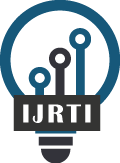|
International Journal for Research Trends and Innovation
International Peer Reviewed & Refereed Journals, Open Access Journal
ISSN Approved Journal No: 2456-3315 | Impact factor: 8.14 | ESTD Year: 2016
Scholarly open access journals, Peer-reviewed, and Refereed Journals, Impact factor 8.14 (Calculate by google scholar and Semantic Scholar | AI-Powered Research Tool) , Multidisciplinary, Monthly, Indexing in all major database & Metadata, Citation Generator, Digital Object Identifier(DOI)
|
Issue: October 2025
Volume 10 | Issue 10
Review Result and Publication of Paper within : 2-3 days
Click Here For more DetailsFor Authors
Forms / Download
Published Issue Details
Editorial Board
Other IMP Links
Facts & Figure
Impact Factor : 8.14
Issue per Year : 12
Volume Published : 10
Issue Published : 113
Article Submitted : 18006
Article Published : 7746
Total Authors : 20484
Total Reviewer : 747
Total Countries : 140
Indexing Partner
Licence
This work is licensed under a Creative Commons Attribution-NonCommercial 4.0 International License







|
Published Paper Details
|
|
| Paper Title: | Tuning of PID Controllers for SOPDT Systems |
| Authors Name: | Gyanesh Kumar Pathak , Sharad Tripathi , Anuj Tiwari , Ankit Srivastava |
| Download E-Certificate: | Download |
| Author Reg. ID: |
IJRTI_184507
|
| Published Paper Id: | IJRTI2211005 |
| Published In: | Volume 7 Issue 11, November-2022 |
| DOI: | |
| Abstract: | The ease implementation, the simple mechanism and robustness of PID controllers has attracted the use of these controllers in the process industries. There are numerous tuning techniques are available for tuning of PID controllers. In this research work, a second-order plus dead time (SOPDT) model is developed and tunning of PID controller is done by using the root locus method. In this method poles are allocated in such a way that model poles are cancelled out by controller zeros, but exact cancellation is not possible. Since the controller cancels out the model poles which is nearest to its exact value, hence an approximation is done to cancel the model poles and to determine damping ratio and the time constant. In this Technique, the higher order system (oscillatory and non-oscillatory) with delayed input is reduced into a second order system and then tuning of the PID controller is done by using the root Locus method, and also the damping ratio and the time constant is calculated to improve the speed of the response. Here in this work, the Routh-Hurwitz criterion is also used to find the value and range of the dc gain k to design a stable system. Here a quantitative and comparative analysis of the original higher order systems and the SOPDT systems (modelled by Root-Locus technique), is done to compare the various parameters like, settling time, rise time, transient time, peak overshoot, peak time etc. and then the unit step response for both the systems has been plotted and analyzed. |
| Keywords: | SOPDT, PID controller, Ziegler Nichols, Root Locus technique, settling time, tunning, rise time, peak overshoot |
| Cite Article: | "Tuning of PID Controllers for SOPDT Systems", International Journal of Science & Engineering Development Research (www.ijrti.org), ISSN:2455-2631, Vol.7, Issue 11, page no.26 - 36, November-2022, Available :http://www.ijrti.org/papers/IJRTI2211005.pdf |
| Downloads: | 000205118 |
| ISSN: |
2456-3315 | IMPACT FACTOR: 8.14 Calculated By Google Scholar| ESTD YEAR: 2016 An International Scholarly Open Access Journal, Peer-Reviewed, Refereed Journal Impact Factor 8.14 Calculate by Google Scholar and Semantic Scholar | AI-Powered Research Tool, Multidisciplinary, Monthly, Multilanguage Journal Indexing in All Major Database & Metadata, Citation Generator |
| Publication Details: |
Published Paper ID: IJRTI2211005
Registration ID:184507
Published In: Volume 7 Issue 11, November-2022
DOI (Digital Object Identifier):
Page No: 26 - 36 Country: Chandauli, Uttar Pradesh, India Research Area: Instrumentation & Control Engg. Publisher : IJ Publication Published Paper URL : https://www.ijrti.org/viewpaperforall?paper=IJRTI2211005 Published Paper PDF: https://www.ijrti.org/papers/IJRTI2211005 |
| Share Article: | |
|
Click Here to Download This Article |
|
| Article Preview | |
|
|
|
Major Indexing from www.ijrti.org
| Google Scholar | ResearcherID Thomson Reuters | Mendeley : reference manager | Academia.edu |
| arXiv.org : cornell university library | Research Gate | CiteSeerX | DOAJ : Directory of Open Access Journals |
| DRJI | Index Copernicus International | Scribd | DocStoc |
ISSN Details
 |
 |
ISSN: 2456-3315
Impact Factor: 8.14 and ISSN APPROVED,
Journal Starting Year (ESTD) : 2016
DOI (A digital object identifier)
 Providing A digital object identifier by DOI.ONE How to Get DOI? |
Conference
Open Access License Policy
Important Details
Join RMS/Earn 300
WhatsApp
Click Here
Click Here
Indexing Partner |
|||
| Copyright © 2025 - All Rights Reserved - IJRTI | |||






